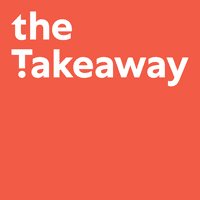Trans Bodies, Trans Selves
[music]
Melissa Harris-Perry: I'm Melissa Harris-Perry and this is The Takeaway. Sexy, striking, unapologetic Laverne Cox casts her eyes down just slightly as she looks into the camera. Her presence on this May 2014 Time Magazine cover declares the transgender tipping point. Now Laverne at the time was starring in the hit series, Orange Is the New Black, and redefining realness of the first memoir from another Black trans woman, writer, director, and advocate Janet Mock was a New York Times bestseller.
In 2014, the public visibility of these Black transgender women seemed to affirm a growing public awareness of trans identity and experience but of course, this was also a time when transgender women of color were experiencing an alarming rise in violence. The book Trans Bodies, Trans Selves was first published in this tumultuous moment. The book is written by and for trans, non-binary, and gender-fluid people.
Now today in 2022, we have some of that same sense of the best of times, the worst of times, growing public awareness at the same time that state and local policies targeting gay and transgender people are flooding states considering over 130 bills specifically targeting transgender folks and especially transgender young people. To meet this particular moment, Trans Bodies, Trans Selves is published into a second edition with new material on transgender youth and a focus on uplifting intersectionality in transgender communities. Kelsey Pacha is the board president of Trans Bodies, Trans Selves. The nonprofit that organizes this book, he's also a co-author on the new edition.
Kelsey Pacha: This book is for transgender, non-binary, and gender-expansive communities and parents, loved ones, providers like therapists, doctors, teachers, anyone who wants to know how to do better when interfacing with transgender people or people that are exploring their gender identity.
Melissa Harris-Perry: I grew up with the foundational text, Our Bodies, Ourselves. Tell me a little bit about using that model for this book.
Kelsey Pacha: Yes, Trans Bodies, Trans Selves was founded as an organization to create the book in 2012. It was founded by a group of medical school students who were finding that there were many holes in their med school curriculum that there wasn't really any discussion of transgender and non-binary people even though many of the physicians identified that way. I think in a similar way to the creation of Our Bodies Ourselves that feminist health resource was created to fill in some holes where there were a lot of male doctors and specialists who were working with women and girls who maybe didn't have the empathy, the understanding, and the real-world experience of what it is like to be a woman going to a doctor's office.
That's the genesis of this project is really wanting to give scientifically accurate, but also grassroots empathy-building information to not only providers but also good information for people who want to know more about themselves. We're really proud to continue that legacy from Our Bodies Ourselves.
Melissa Harris-Perry: It does feel to me like there are some differences in tone, in approach that occur when we're talking about our bodies, versus when we're talking about our bodies for someone else. I'm wondering about how you thread that needle or build that balance between the piece that is about helping young people, maybe even grown folks themselves reflect on, think about, consider, be in conversation about their own bodies versus that empathy-building piece that you've talked about.
Kelsey Pacha: Yes, that is definitely a balance that we have to strike. In the process of writing and editing, we had many, many conversations and iterations of different chapters something like medical transition. Physicians writing about hormone protocols, when they should be started, what are some of the options for that? We always had to strike a balance between making the resource accessible. That's the hugest emphasis we put as part of the creation process is that we want the language to be clear. We want it to be accessible to folks that are not necessarily professionals.
We also wanted to give some guidance for folks that are professionals working in healthcare, mental health, education, et cetera, to have touchpoints of where they can get more resources. What I really love about how the book is laid out is that we've got the actual text, then we've also got sidebars that have online resources, helpful helplines and phone numbers, academic citations that come at the end of each chapter. Then, of course, poetry and essays and photographs and art and comics that were made by us for us. I think we give a pretty good spread of that personal perspective while also giving scientifically accurate robustly researched information for professionals as well.
Melissa Harris-Perry: My friend and colleague Janet mock taught me early on that in our public conversations that we would have around her books around her work, she was like, "Listen, I've done trans 101, I don't do trans 101 conversations anymore. I actually want to talk about my selfhood or my work with actually not talking about my body. There is ways in which the body becomes the one thing that the public is interested in." Assert for me, or help me to understand the ways in which the focus on the body for some parts of the journey, for some parts of the work, the focus on the body is relevant and the ways that that can be made relevant in the understanding of the self?
Kelsey Pacha: I would agree. I think that in popular media, that there often has been a focus on have you had "the surgery"? I've heard that many times, not in my life, my loved ones' lives, but also on talk shows and things like that. I do think there's a way that cisgender people, not transgender people can get preoccupied with that question and there's a good reason for that. Most people get no education and no exposure to what does it look like if someone wants to medically transition or surgically transition?
What we try to do in the book is provide, again, accessible information about medical transition, general medical care, and reproductive care surgical transition. What kinds of techniques are available? When are they appropriate? Hormone protocols and also information about devices and prosthetics that might help people feel more comfortable and congruent in their bodies.
[music]
Melissa Harris-Perry: Let's take a quick break, more on this when we're back on The Takeaway.
[music]
Welcome back to The Takeaway. I'm Melissa Harris-Perry, and I've been speaking with Kelsey Pacha, co-author on the new edition of the book, Trans Bodies, Trans Selves. One of the chapters is actually not so much about the body or at least not in a cartesian dualism sense, but about religion, spirituality, the body, and the self in that way and you wrote that chapter. Can you tell us a little bit about that chapter?
Kelsey Pacha: Yes, my academic background is in social work and then a master of divinity, which is the professional degree that chaplains and pastors get, and an MA in religion and psychology. My vocation, my calling is all about helping people to heal from spiritual trauma and to reclaim their identities as whole people, whether they end up feeling spiritually connected or not. There is a long history. Some of the earliest recorded writings about humans in a spiritual sense include the acknowledgment that some humans are not male or female.
They might be fluid between those categories. They might be in between or beyond binary gender categories in some way. We usually refer to this social category as a third gender, someone like Joe Novark for example, can be viewed as a third gender figure, gender nonconforming, but also her gender behavior was meaningfully a part of her spiritual journey. Third gender people are often revered as especially sacred, as knowing something special or unique about God, the universe, whatever the power within that religious tradition is.
For me, that feels like very important information for people to get because the reality is that Christian colonization of many indigenous cultures who hold that knowledge, but also the meaningful history is within Judaism, Christianity and Islam, have been erased through some of these Victorian and white supremacist colonizing ideals. When we think about some of the political backlash that has happened against transgender and non-binary people, to me, having worked with queer and trans people for about 16 years, it's very obvious to me that religious beliefs, but really misunderstandings of religious beliefs, undergird many of those policies and myths that, unfortunately, literally kill people.
The religion chapter is a passion project for me to get those resources to people but I also think that having those resources can help parents, can help teachers, and providers that are struggling religiously with, "What do I do with a transgender person? How do I understand their humanity in light of my beliefs?" That is a vital question for our society today.
Melissa Harris-Perry: Let's talk a bit about the history of this book. The first edition came out in 2014. I think there's ways that we could think of 2014 as a bit of a watershed year. Talk to us a bit about both what that moment was and how the world is or is not different now.
Kelsey Pacha: Yes, the first edition of Trans Bodies came out in June of 2014, which was one month after Time Magazine declared that time the transgender tipping point with the cover with Laverne Cox. There was definitely more of an awareness that transgender people existed, there was a lot more media representation that has certainly grown in the eight years since. Research would tell us that an increasing number of Americans, this is from a Pew Forum report from 2021, over 40% of Americans know a transgender person and about 25% know a person who goes by a pronoun other than he or she.
I think what this points to is that there has been an explosion of media representations and then social media. You have hundreds of trans and non-binary creators giving you a window into their lives and artistically exploring their gender. There has been an overall increase in legal protections when you're looking at states, but many of the same barriers exist even with positive representations increasing. There have been over 200 anti-trans state laws proposed since 2021, many of them prohibiting or punishing medical transition for youth access to bathrooms and to athletics.
For many trans and non-binary people, it's very piecemeal. We have to strategize based on what our health insurance might cover in our state, for example, or what state level of protection we have in employment. A resource like Trans Bodies, Trans Selves, helps with that strategy. It provides actual voices of trans people saying, "Here's how I did it. Here's how I loved myself and survived in a system that doesn't totally provide for me yet."
Melissa Harris-Perry: Talk to me about how this book and the broader work that you all do, also connects with the intersectional identities for trans and non-binary folk.
Kelsey Pacha: One of our focuses for the second edition of the book was to uplift BITPOC, trans and non-binary voices, Black, Indigenous, Trans People of Color. There are many barriers that exist for people based on the multiple layers of their identity. Something that I'm really proud of as a nonprofit organization is that all of the royalties of the book go into our book donation program. We donate books, we've done it in every US state, and then we have an ongoing partnership with LGBT books to prisoners. We've donated almost 200 books to incarcerated folks who need these resources.
Having a partnership where we're sending books to incarcerated people who have had their civil rights taken away entirely is something that is very, very important to us. I feel proud to say that our book has been one of the banned books in that system. The last thing I would say is that in trying to write a book for our community by a community, you quickly realize the trans community is not a monolith, you have people with all kinds of different backgrounds, concerns, and worldviews.
What we tried to do in creating the book is put those people in conversation. The first chapter of the book, Our Many Selves, is written by two people who have different worldviews, and they're very upfront and clear about that. The book is a living document and it's a dialogue, and that's more accurate, I think, to who we are as the many trans and non-binary communities.
Melissa Harris-Perry: Love that idea of the living document that remains in dialogue. I certainly appreciate that rather than being concerned about the book being targeted, you're a little bit proud of the notion of being banned in this moment. Just maybe as a final point here, I think there are ways to read certain kinds of media visibility as evidence of unidirectional progress. We've been covering here on The Takeaway a lot the effects of both the actual legal effects on young people, on families of trans and non-binary folks, but also even in those places where there may not have been any law passed, but simply the knowledge that this legislative activity is happening, the effects on people's lives, their spirits, their souls, can you say just maybe a final beat about that? Best of times, worst of times?
Kelsey Pacha: Sure, this is complex. Just the conversation, as you said, in the media, is enough to cause internalizing self-stigma not only for LGBTQ people broadly but also their loved ones. A lot of those, the anxiety, the depression, the lower self-esteem, the self-harm, or self-injurious behaviors are the result of that social stigma. The good news on the other hand is that even in, let's say, states where there are oppressive laws, there's also research evidence that to have one person who supports, for example, a youth in their correct name and pronouns, having one parent, one teacher, one therapist, who sees their authentic identity and affirms that, it mitigates, it lowers a lot of those harmful long term health outcomes.
There's one thing that I always say to people, it's that you could be that person, it really does make a huge difference. Never discount even in that place of frozenness of, "I'm not sure how to do the right thing." Pick up a resource like this book and work on being present for the trans and non-binary folks in your lives.
Melissa Harris-Perry: Kelsey, thank you so much for joining us here on The Takeaway, and thank you for your work on this book.
Kelsey Pacha: Thank you for having me.
[music]
Melissa Harris-Perry: That was Kelsey Pacha, a co-author on the new edition of the book, Trans Bodies, Trans Selves.
[music]
Copyright © 2022 New York Public Radio. All rights reserved. Visit our website terms of use at www.wnyc.org for further information.
New York Public Radio transcripts are created on a rush deadline, often by contractors. This text may not be in its final form and may be updated or revised in the future. Accuracy and availability may vary. The authoritative record of New York Public Radio’s programming is the audio record.



